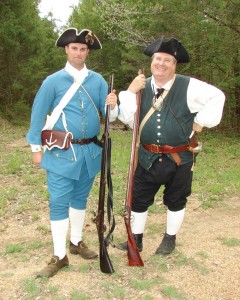Alumuchee-Bellamy Covered Bridge

This 88-feet long covered bridge built in town lattice truss style originally crossed the Sucarnochee River just south of downtown Livingston headed toward York on hwy 11. When a concrete bridge replaced it in 1924 the covered bridge was moved to span Alamuchee Creek in the town of Bellamy, AL where it earned its name. In 1969 the bridge was moved back home to Livingston to serve pedestrians crossing Duck Pond on the University of West Alabama campus where it is enjoyed by students and visitors alike. The Alamuchee-Bellamy Covered Bridge is currently eligible for addition to the National Register of Historic Places. The bridge is maintained by the Sumter County Historical Society.
Photo credit Blackbeltmuseum.com
The Black Belt region of Alabama and Mississippi is a swath of dark rich soil atop limestone chalk formations. The Black Belt Museum is a project of the University of West Alabama that is dedicated to educating the public on archaeological, botanical, geological, paleontological, and archival interests of this region. In addition to interests of the Black Belt the museum hosts travelling exhibits to share with the community. The Museum is located on the corner of Franklin and Washington Street downtown Livingston.
Vera Ward Hall Monument 
Vera Hall (1902 – 1964) was a Sumter County native and famous blues singer. Best known for “Troubles So Hard“, which has been covered and remixed by numerous artists including Moby, and CeeLo .
The memorial was erected by The Alabama Blues Project and The Sumter County Historical Society and can be found on the corner of Franklin and Washington Street just in front of the Black Belt Museum. Although her grave-site is unknown she is said she is buried in the Livingston City Cemetery.
City Hall 
Livingston City Hall was originally built around 1850 to serve the passenger and freight services of the railroad system running between Atlanta, Birmingham, and New Orleans. The left side of the building was used for freight and the right side for passengers. Even after the passenger trains stopped picking up passengers and freights in the late 1970’s, the building continued to serve as a freight office for the local industries until the last 1980’s. With a grant from the State of Alabama the building was renovated in 2001 and became Livingston City Hall on April 3, 2002. The building houses the City Administrator, Purchasing/Revenue Dept, Building Dept, Court Clerk, and Utilities Board offices, as well as the Mayor/Council chamber.
photo credit to UWA
Lake LU, pronounced Lake “El-Yoo”, is a 54-acre lake on the University campus that provides facilities for fishing, boating and picnicking. The Lake was opened in 1976. Lake LU has competitive fees for rentals, pavilions and fishing. It’s makes a great location for a family reunion, a romantic outing or a Saturday picnic with the family. Reserve your pavilion today if you are planning a larger event. The Lake LU nature trails begin at a wooden bridge crossing a narrow arm of the lake. The trails are made up of the Lake Trail, Prairie Trail and Forest Trail.
Nature panels along the trails educate local residents and tourists about biologically significant areas and species identified in the Alabama State Wildlife Action Plan, with these specific panels created to emphasize the conservation of the Blackland prairies.
The University of West Alabama
Photo credit UWA
Located on Highway 11. This state university began in 1835, when about 70 citizens contributed to a fund for the construction of the school building. The school was incorporated as a female academy, Livingston Collegiate Institute, in 1840. In 1833, the State Legislature appropriated funds for a normal school for the training of teachers. The school became Alabama Normal School. The state assumed active control of the school in 1907. By 1929, it became the Livingston State Teachers College, and males were admitted. The name was again changed in 1959 to Livingston State College, in 1986 to Livingston University and finally to The University of West Alabama in 1995.
Myrtlewood is located on the southeast corner of downtown Livingston at the intersection of Church and South Street. It is thought to be the oldest cemetery in Sumter Co.
Graves alphabetically listed (1830-1974)
Graves listed by year of burial (1954-1992)
Sumter County Courthouse Square
The original Sumter County Courthouse was built of logs. In 1839, It was replaced by a frame courthouse which burned in 1901. The Probate Office, also built in 1839, survived the fire and still stands today. The present courthouse was erected on July 9, 1902 in the Beaux Arts Style and is listed on the National Register of Historic Places. The courtroom itself is upstairs while the tax collector, tax assessor, circuit clerk, and mapping office are housed on the main floor. The square also features the confederate monument, which was unveiled as the tribute to the confederate soldiers on June 17, 1909, and the Bored Well whose water gained wide popularity in the 19th century for its medicinal properties.
BORED WELL
Located on the northwest corner of the Courthouse Square this artesian well began construction in 1854. It is said an old, grey, blind, mule pulled an auger around and around for 4 years boring the well until its completion in 1857. A hand pump was added in 1904 and an electric pump in 1928. The well was originally covered by a Chinese pagoda but was replaced by a brick structure in 1924. In 1999 the brick structure callapsed and was replaced in 2005 with the current structure. The salty, alkaline water of the well is said to have medicinal qualities and once drew visitors from far and wide.
COURTYARD
Beautiful area downtown Livingston between Black Belt Realty and Sumter County Record Journal. Call City Hall at (205) 652-2505 to reserve your spot for any special occasion.



